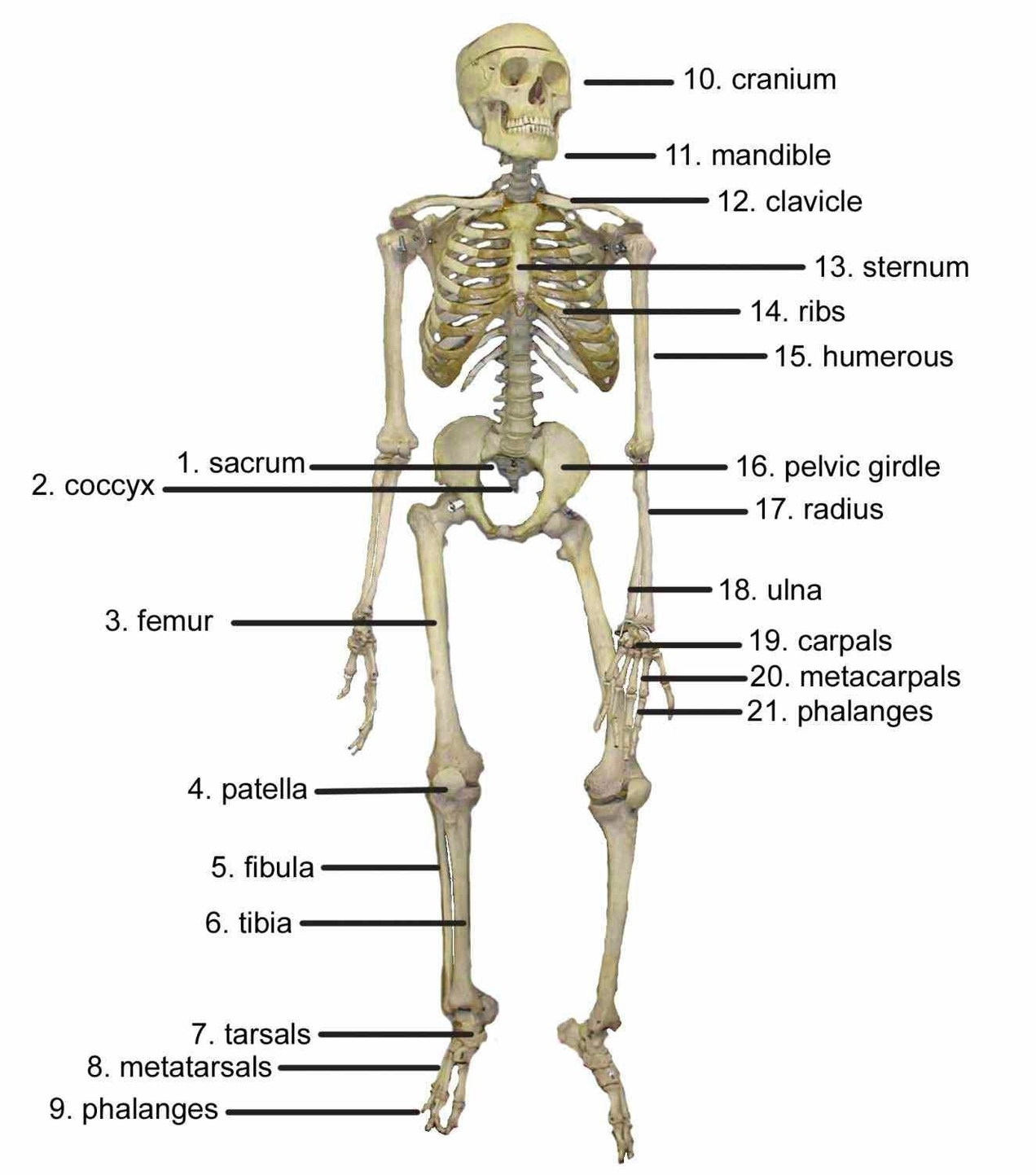The Human Skeleton
The human skeleton is the internal framework of the human body, serving as a support structure and providing protection for vital organs. It is composed of around 270 bones at birth, decreasing to around 206 bones by adulthood after some bones fuse together.
ubdivisions of the Skeleton
The human skeleton consists of two principal subdivisions:
1. Axial Skeleton: This includes the vertebral column (spine), much of the skull, and parts of the rib cage. The axial skeleton maintains the upright posture of humans, transmitting the weight from the head, trunk, and upper extremities down to the lower extremities at the hip joints.
2. Appendicular Skeleton: This includes the pelvic (hip) and pectoral (shoulder) girdles, and the bones and cartilages of the limbs. The appendicular skeleton makes locomotion possible and protects the major organs of digestion, excretion, and reproduction.
Functions of the Skeleton
The human skeleton performs six major functions:
1. Support: The skeleton provides the framework which supports the body and maintains its shape.
2. Movement: The joints between bones allow movement, with some allowing a wider range of movement than others.
3. Protection: The skeleton protects vital organs. For example, the cranium protects the brain, and the rib cage protects the lungs and heart.
4. Production of Blood Cells: The bone marrow within certain bones is responsible for the production of blood cells.
5. Storage of Minerals: Bones store minerals such as calcium and phosphorus, which can be released into the body when needed.
6. Endocrine Regulation: Bones release a hormone called osteocalcin, which contributes to the regulation of blood sugar and fat deposition.
exual Dimorphism in the Skeleton
The human skeleton is not as sexually dimorphic as that of many other primate species, but subtle differences between sexes in the morphology of the skull, dentition, long bones, and pelvis exist. In general, female skeletal elements tend to be smaller and less robust than corresponding male elements within a given population. The human female pelvis is also different from that of males to facilitate childbirth.
Conclusion
The human skeleton is a remarkable structure, providing support, enabling movement, and performing several vital functions. Its complexity and adaptability underscore the intricate nature of human anatomy and physiology..


